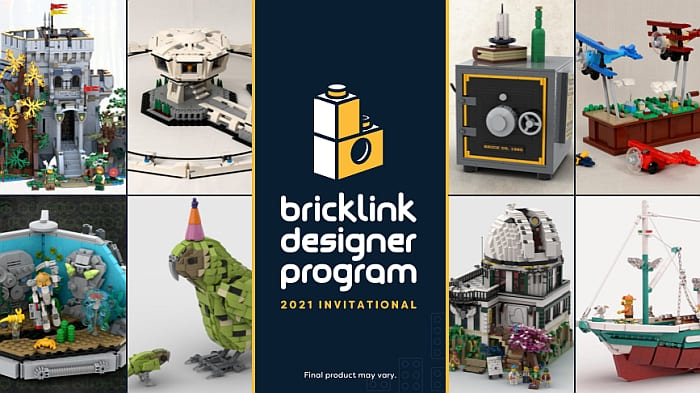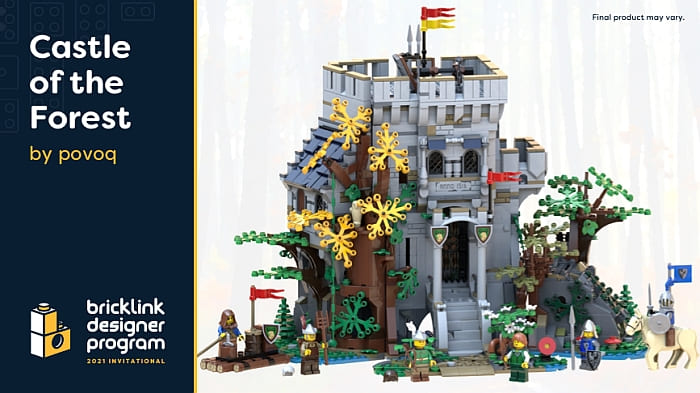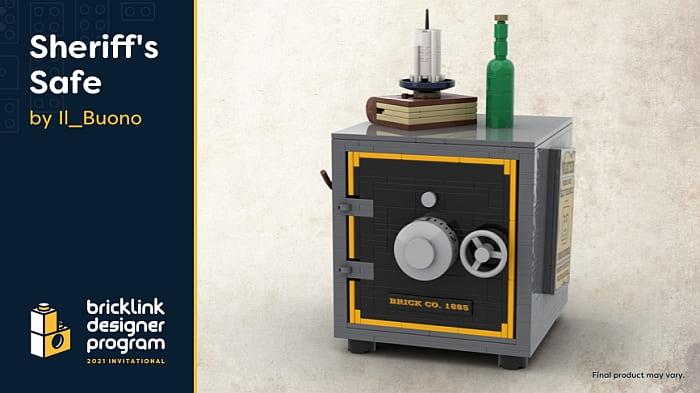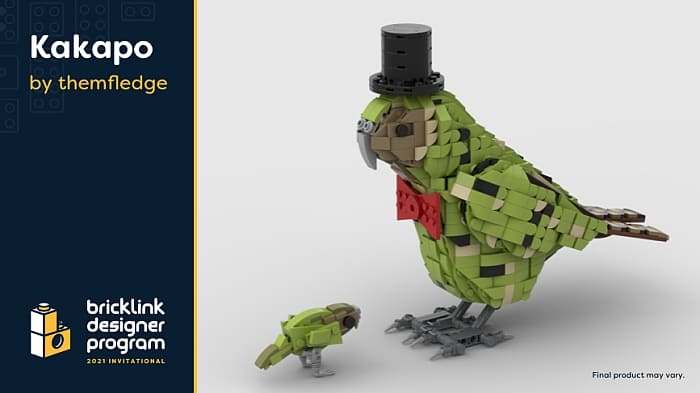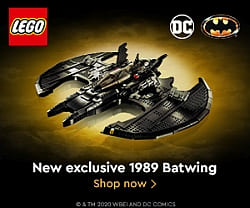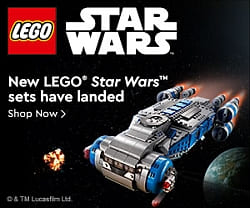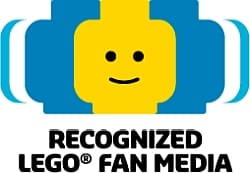An interesting new theme that is going to be released in October of this year is the LEGO City tz collection. I have been really looking forward to this series as they all feature flywheel-powered motorcycles. I’m a big fan of the LEGO Technic Pull-Back Racers, and these little motorcycles appear to be using the same mechanism just at a smaller scale.
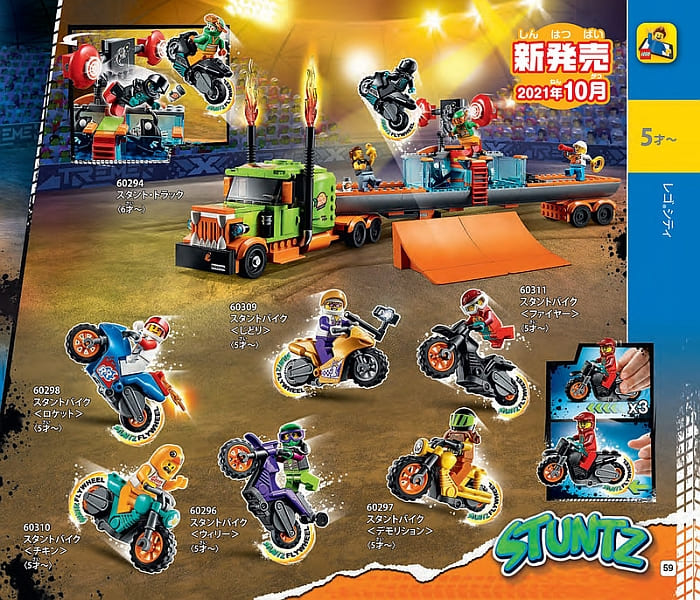
The first wave of the LEGO City Stuntz collection includes 10 sets. Six of those sets feature a single flywheel-powered motorcycle and a minifig. The sets are as follows: #60696 LEGO City Wheelie Stunt Bike, #60297 LEGO City Demolition Stunt Bike, #60298 LEGO City Rocket Stunt Bike, #60309 LEGO City Selfie Stunt Bike, #60310 LEGO City Chicken Stunt Bike, and #60311 LEGO City Fire Stunt Bike. They are going to be $7.99 each at the LEGO City section of the Online LEGO Shop.
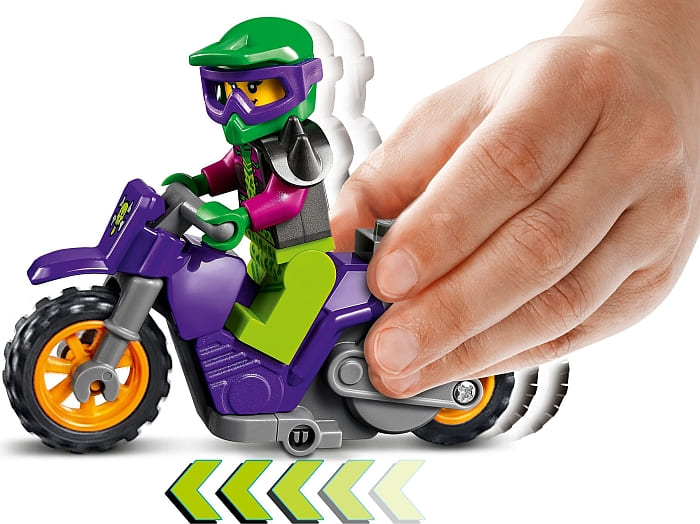
As you can see, amongst the six bikes, there are three different bike frames, and it appears that the logos are printed. And of course, each of the bikes have the flywheel mechanism incorporated into their back wheel (which is the dark-gray part you see). The minifigs all have exclusive printed torsos, helmets, and faces.
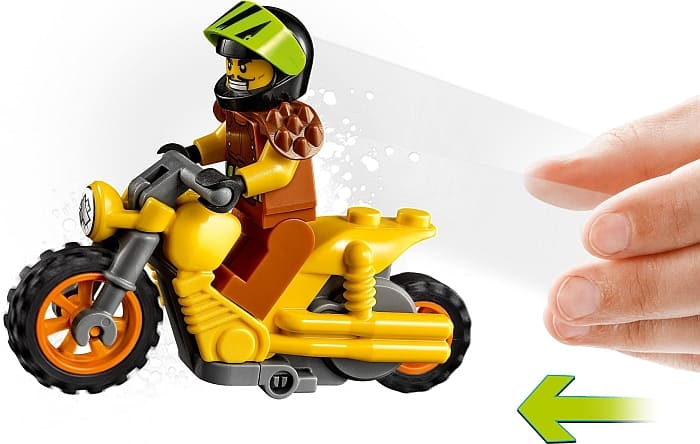
Based on my experience with the LEGO Technic Pull-Back Racers, my expectation is that the bikes will be able to perform high-flying stunts, and they will be awesome for racing challenges. Perhaps my only concern is that I hope they are well balanced, so they don’t fall over prematurely.
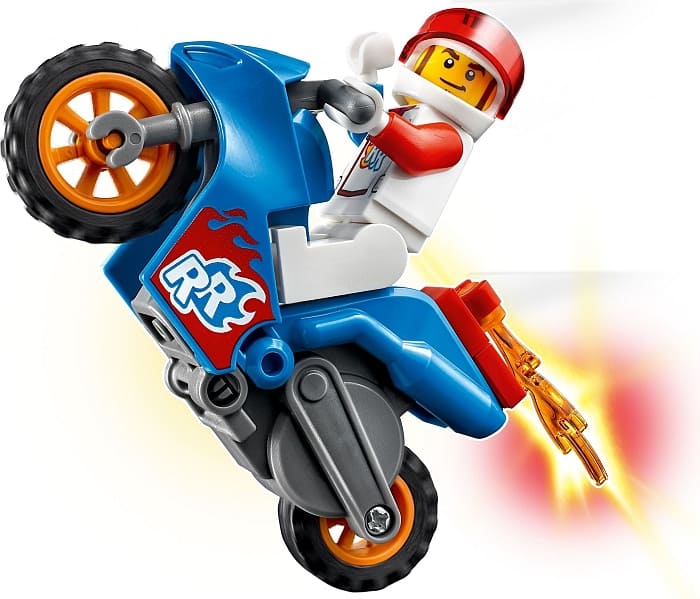
Besides the six single bike sets, there are also four larger sets. These include more of the same bikes, and various stunt challenges.
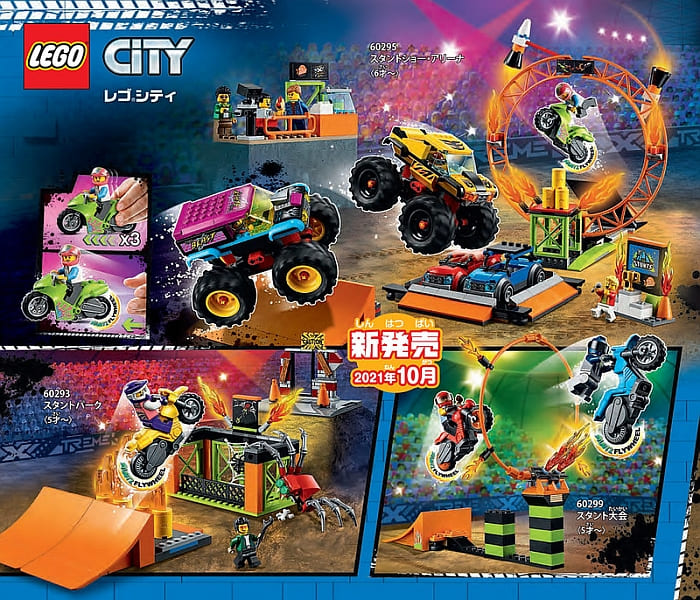
The #60299 LEGO City Stuntz Stunt Competition for $29.99 features two bikes with two riders, a ramp, and a ring of fire on a height-adjustable tower. This is the smallest starter set that also includes stunt challenges, but if you already have similar pieces, it may be cheaper to simply get two of the single bike sets and build your own track. Although I have to admit that the torso prints of both bikers are awesome.
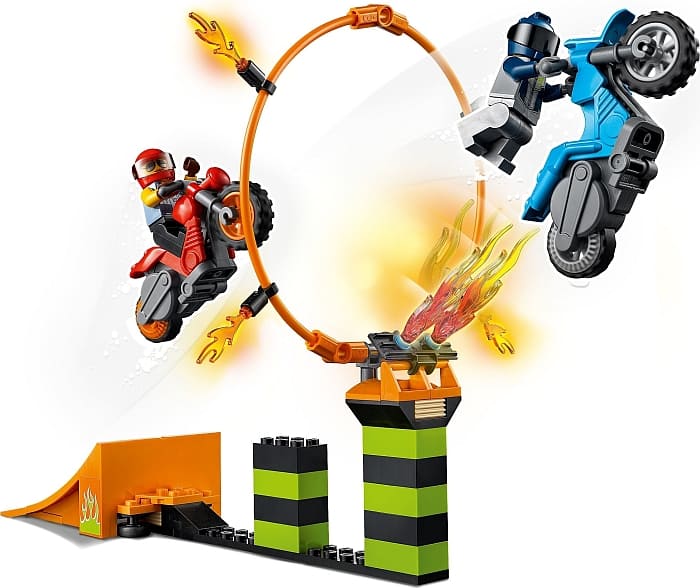
The #60293 LEGO City Stuntz Stunt Park for $39.99 includes only one bike and rider, but also features two launch ramps, fire, spider cage, and other obstacles. Add a couple of single bike sets, and you’re all set for an awesome race!
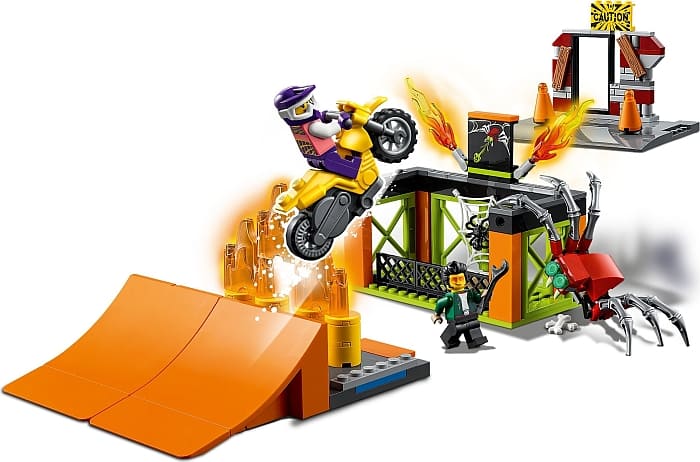
The #60294 LEGO City Stuntz Stunt Show Truck for $69.99 is one of the largest sets in the collection. It features a large truck with a long trailer for hauling a functioning dunk tank and a set of launch and landing ramps. Unfortunately, only one bike is included, but you do get four minifigs.
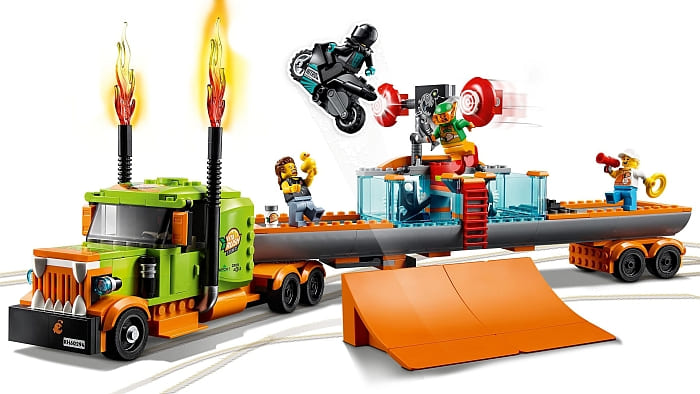
The #60295 LEGO City Stuntz Stunt Show Arena for $99.99 is the ultimate set in the LEGO City Stuntz collection. Besides one of the flywheel-powered bikes, it also features two monster trucks, two cars with collapsible roofs (so the monster trucks can crush them), six minifigs, plus several ramps, a large ring of fire, and other accessories.
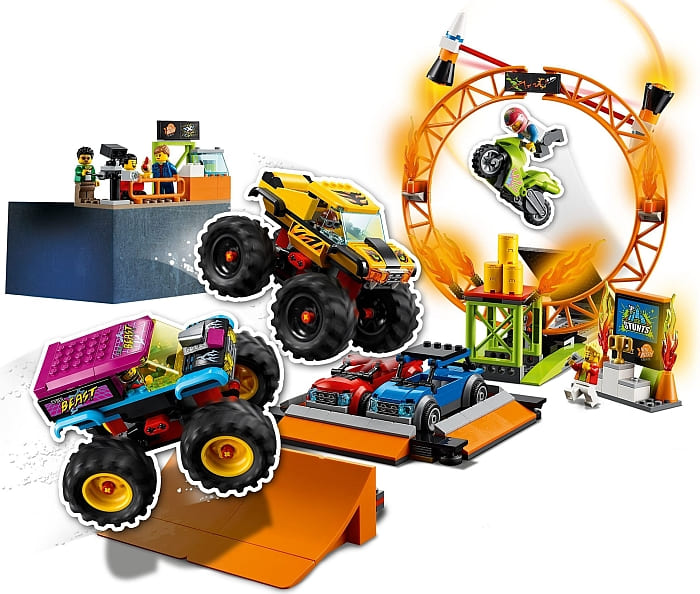
Personally, I really appreciate when LEGO releases simple and fun sets that inspire building and rebuilding, and can facilitate both playtime alone and with friends. Racing games are always great for this. And I’m excited to see the small flywheel mechanism. I’m hope I can collect all the single bike sets, and maybe get one of the stunt sets as well. As I mentioned, they will be available in October at the LEGO City section of the Online LEGO Shop.
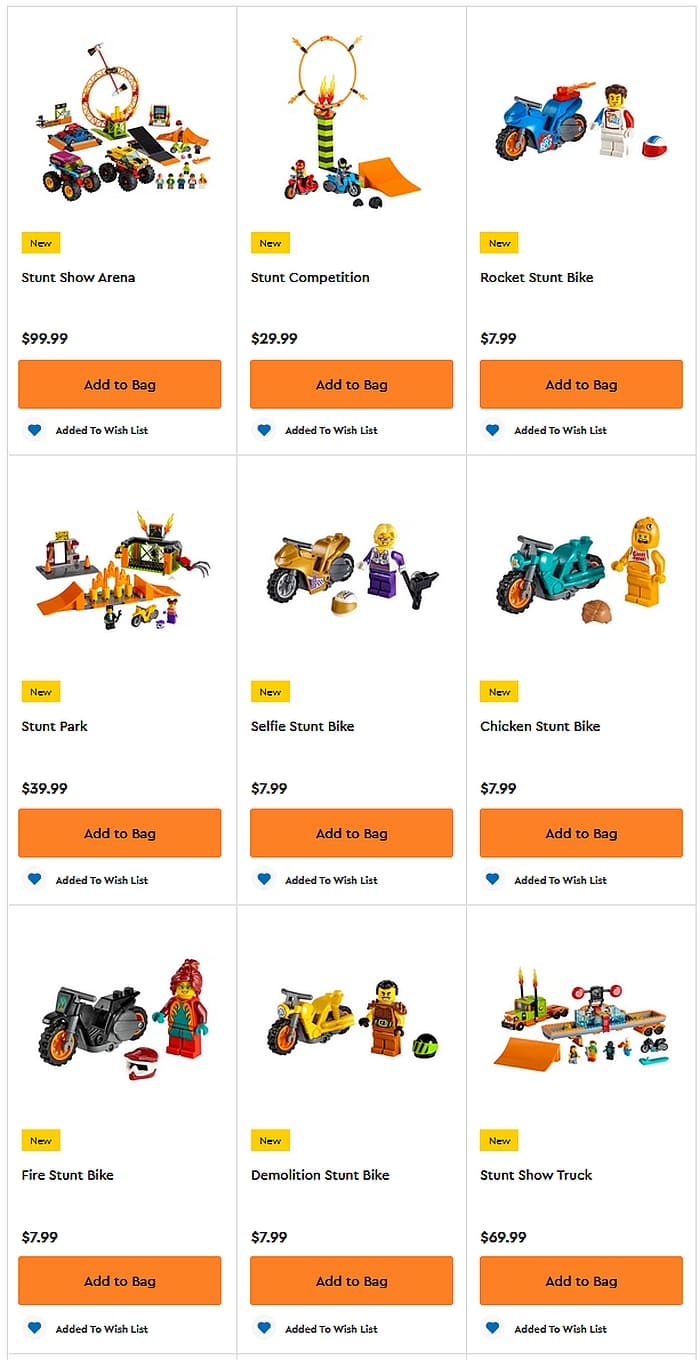
What do you think? How do you like the LEGO City Stuntz sets? Are you planning to get any of them? Feel free to share your thoughts and discuss in the comment section below!
And you might also like to check out the following related posts:


